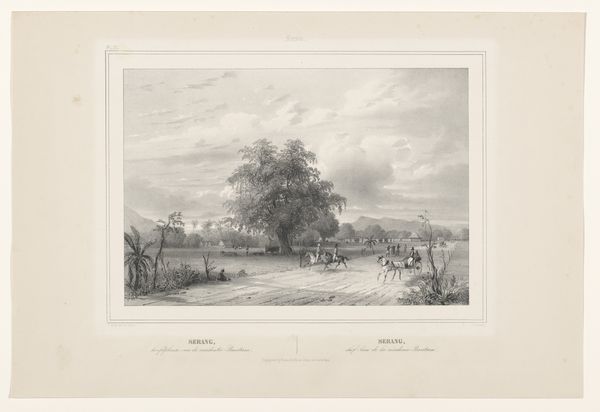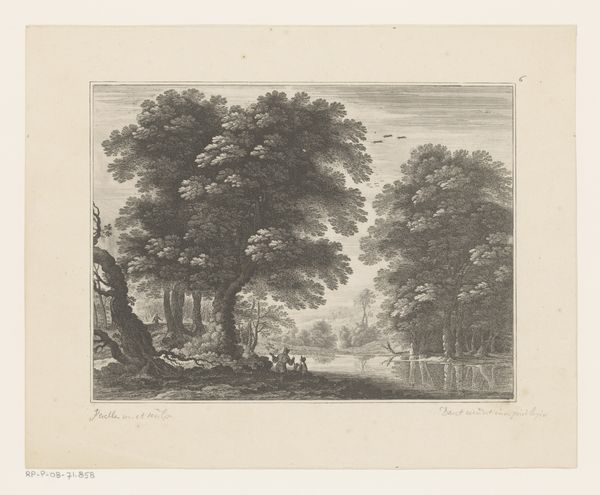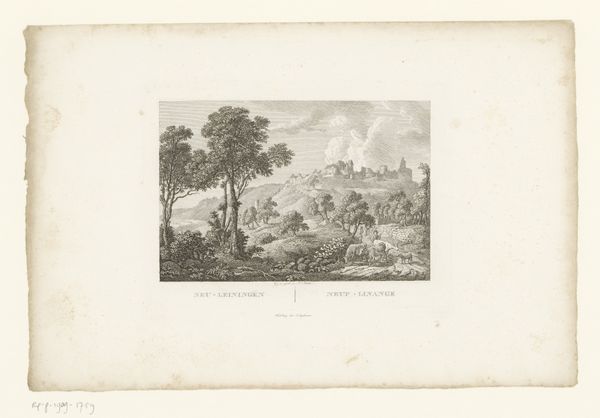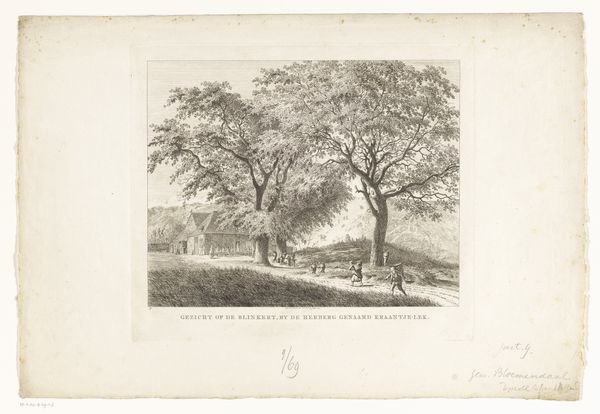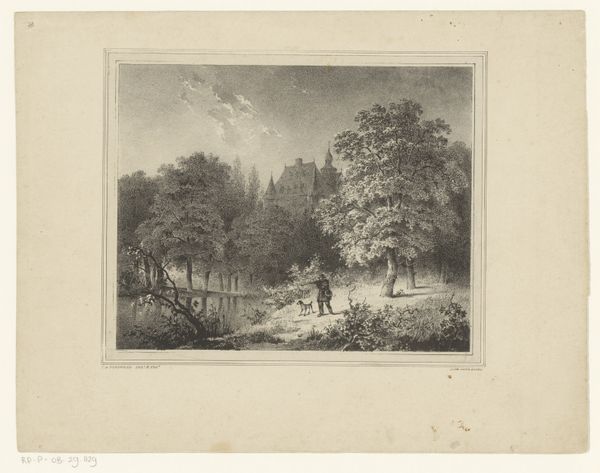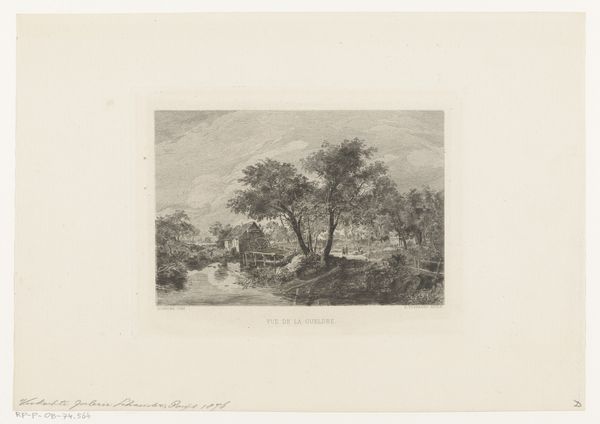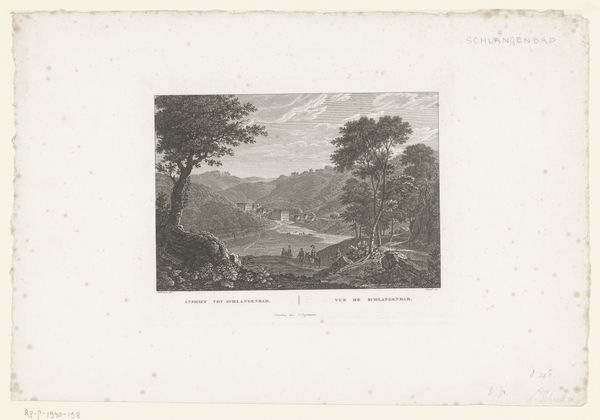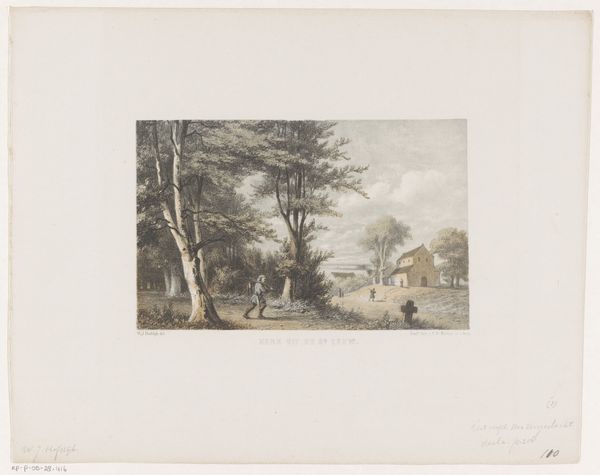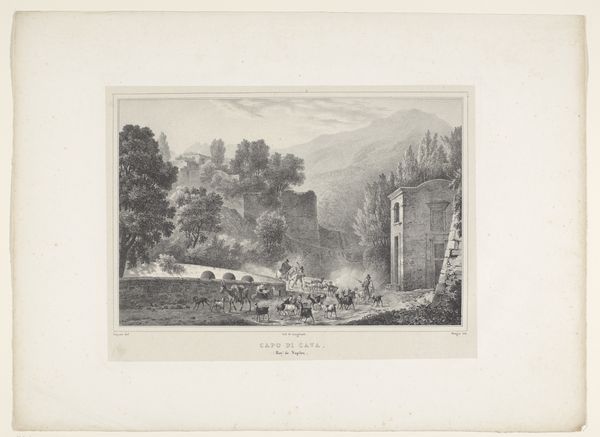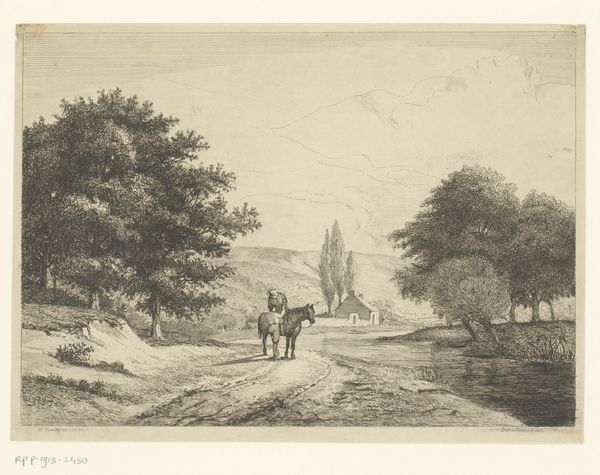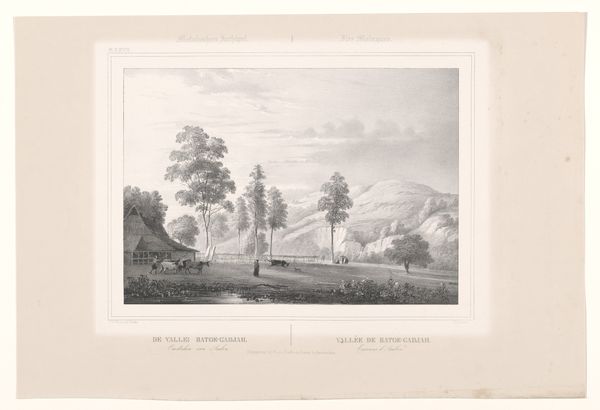
print, etching
#
16_19th-century
# print
#
etching
#
landscape
#
romanticism
#
realism
Dimensions: height 238 mm, width 309 mm
Copyright: Rijks Museum: Open Domain
Curator: Here we have Théodore Fourmois’s "View of Spa," made in 1833. It's an etching, and you can find it in the Rijksmuseum's collection. What strikes you about it? Editor: Well, immediately I'm drawn to the contrast—the detail in the foreground figures compared to the almost dreamy background. It feels a bit like peering into a memory. You can almost feel the crisp air. Curator: Absolutely. Spa, in Belgium, was a popular resort town. What Fourmois presents is less a straightforward depiction and more a social space, accessible for tourism. Think of the infrastructure needed—roads, accommodations. It served the Belgian elite and the rising bourgeoisie who wanted that resort experience. Editor: Looking closer at the figures, you can almost tell what social class they represent based on what clothing and tools are presented on them. This etching captures a very interesting and pivotal time in Belgian societal standards through what raw materials and resources people are able to present to the world. And then rendered through etching? It's quite interesting! Curator: And the print medium itself is significant. Etchings like this were reproducible. Meaning that this particular vision of Spa could reach a wider audience and shape perceptions of the town. Images like this help construct its identity. Editor: True. But let's not forget the craft of etching. The lines, the hatching... it's labor-intensive. It makes you think about the relationship between artistic skill, labor and, commercial distribution, of these sorts of prints at the time. How were these etchings circulated? Who profited? What's the labour behind these resources that allow a tourist destination such as Spa to function. Curator: Good point. The art market played a key role. Fourmois had to navigate that market to have his work seen. "View of Spa" becomes a commodity, both artistic and cultural. What were people expecting from prints? How does one become famous and how does this affect not only his social and financial stature but all other people affected by a tourist location? Editor: It also prompts a re-thinking on value and time put into pieces. How does one measure art that has social-economical implication through the material it presents? Curator: Exactly. It forces us to ask who benefits, not just from the art, but also from the society that it represents and sells? Editor: Indeed. It feels very timely and political even though it appears light and social on the surface.
Comments
No comments
Be the first to comment and join the conversation on the ultimate creative platform.
